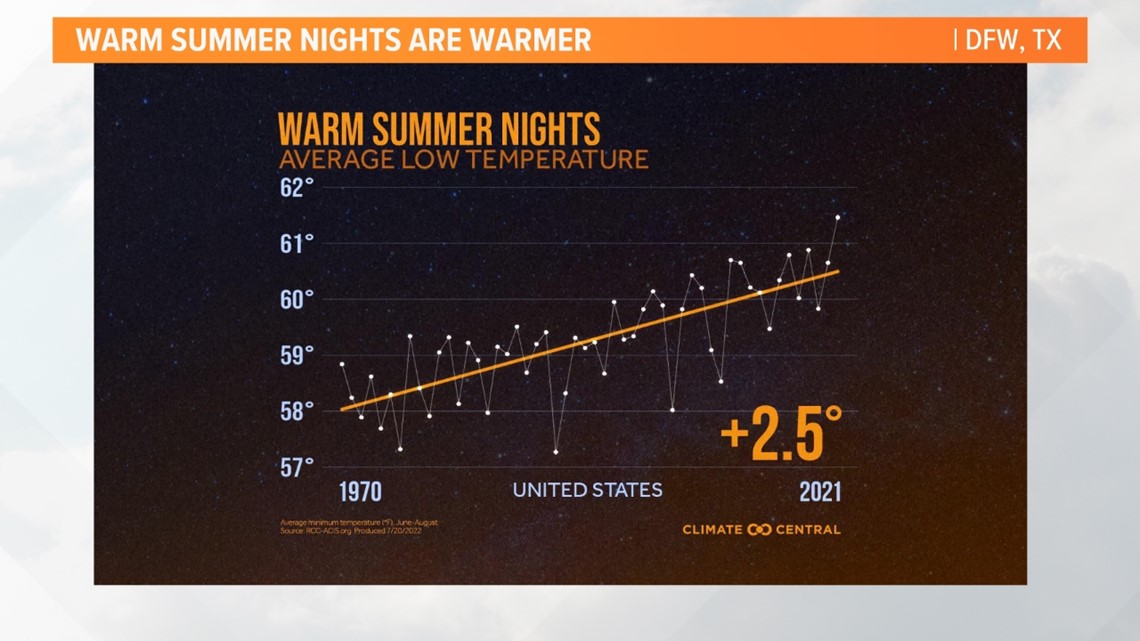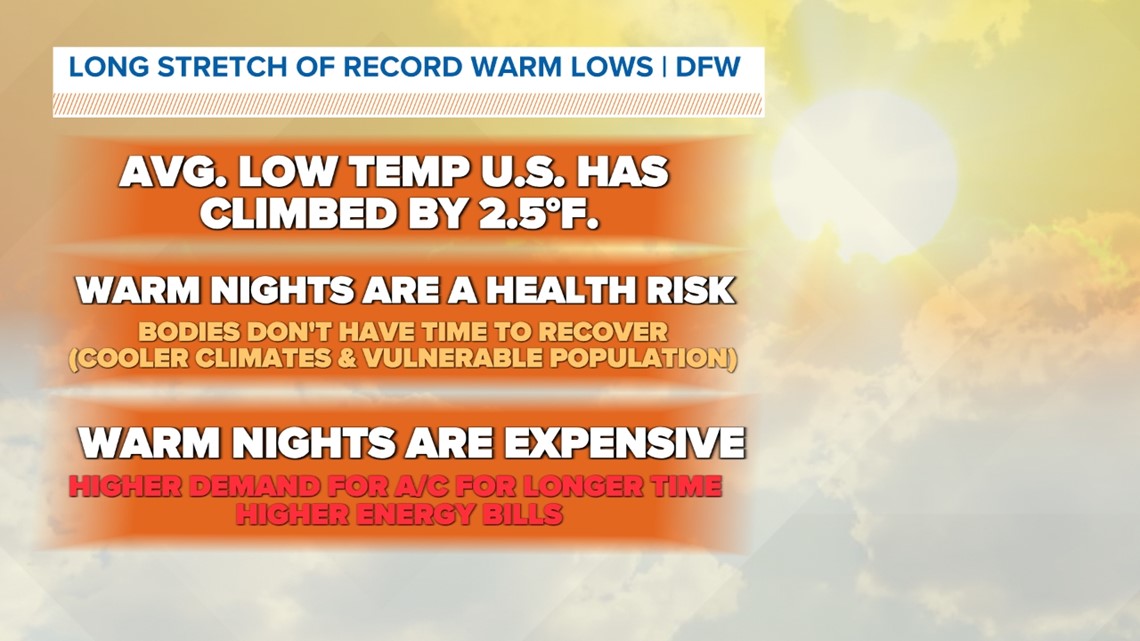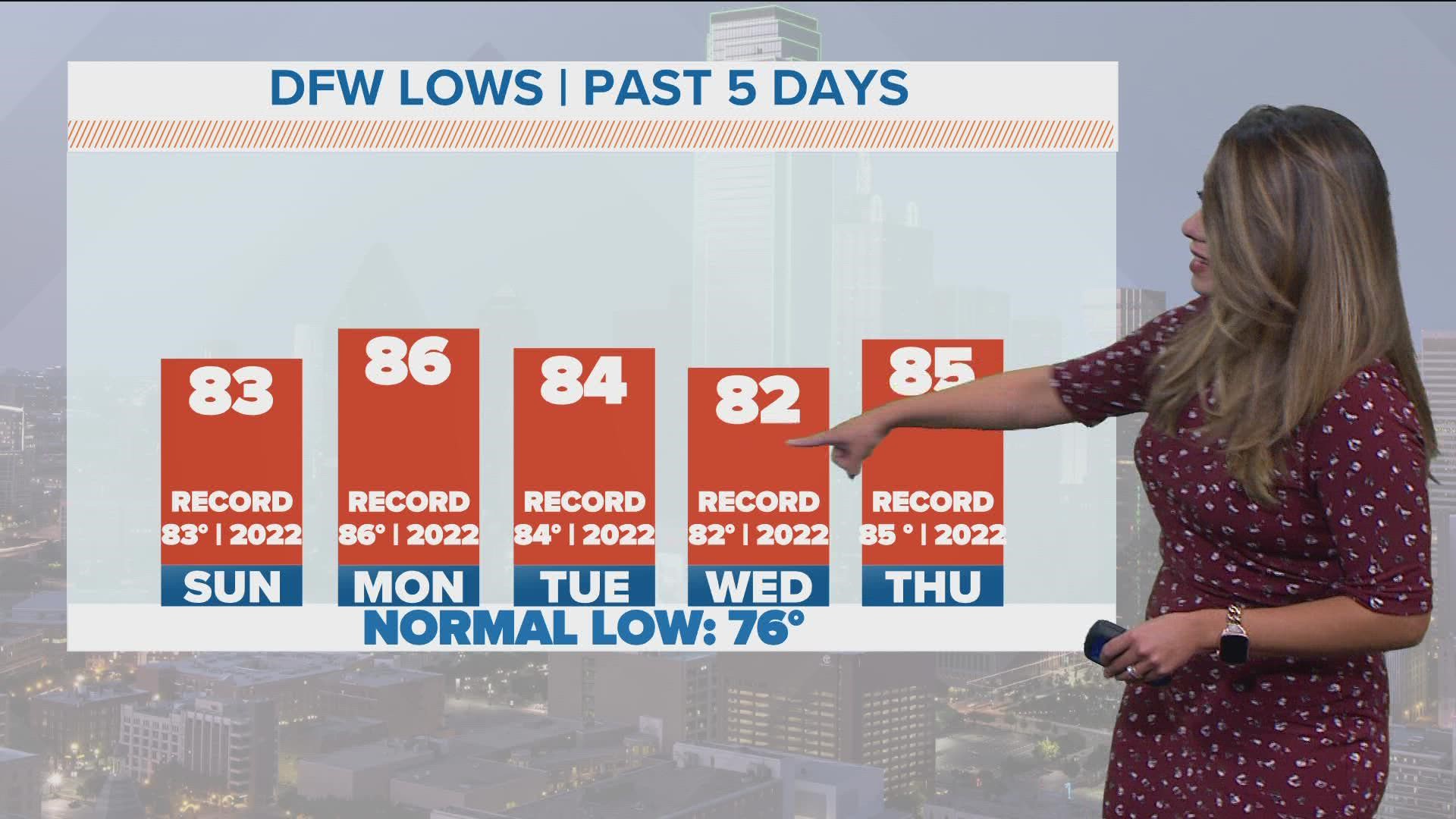DALLAS — Summer of 2022 has certainly brought the heat. Over 25 triple-digit heat days (and counting) has a lot of Texans comparing this summer to the brutal summer of 2011.
In fact, July is so far the second-warmest on record, falling short only to July of 1980.
The culprit? Warm summer nights.
This week, we have consistently broken records for warmest morning low temperatures. On Monday, the morning low of 86 tied for all time warmest morning at DFW.


It is not just here, according to data from Climate Central. The average low temperatures have been on the climb since the 1970s. The continental U.S. has seen an increase of 2.5 degrees on average.
This means that summer low temperatures have warmed nearly twice as fast as summer high temperatures.


Climate Central also released a list of places that experienced the most overnight warming since 1970.
- El Paso, Texas (+8.1°F)
- Reno, Nev. (+17.3°F)
- Las Vegas, Nev. (+9.5°F)
- Salt Lake City, Utah (+7.3°F)
- Boise, Idaho (+6.9°F)
In the summer of 2021, a record 71% of the contiguous US was impacted by extreme minimum temperatures, compared to 45% that experiences extreme high temperatures.
Why do we care?
Warm nights are a health risk.
Extreme afternoon heat followed by very warm nights don't give people enough time to recover. This is especially true in cooler climates where air conditioning is not available for all.
Locally, this is harmful for our vulnerable populations, including outdoor workers, children, the elderly and people with chronic illnesses. Those who face exposure to extreme heat including neighborhoods with less accessibility to air conditioning are even more at risk.


Warm nights are more expensive
More warm nights also mean higher demand for air conditioning both during the day and night. This means higher energy bills.

